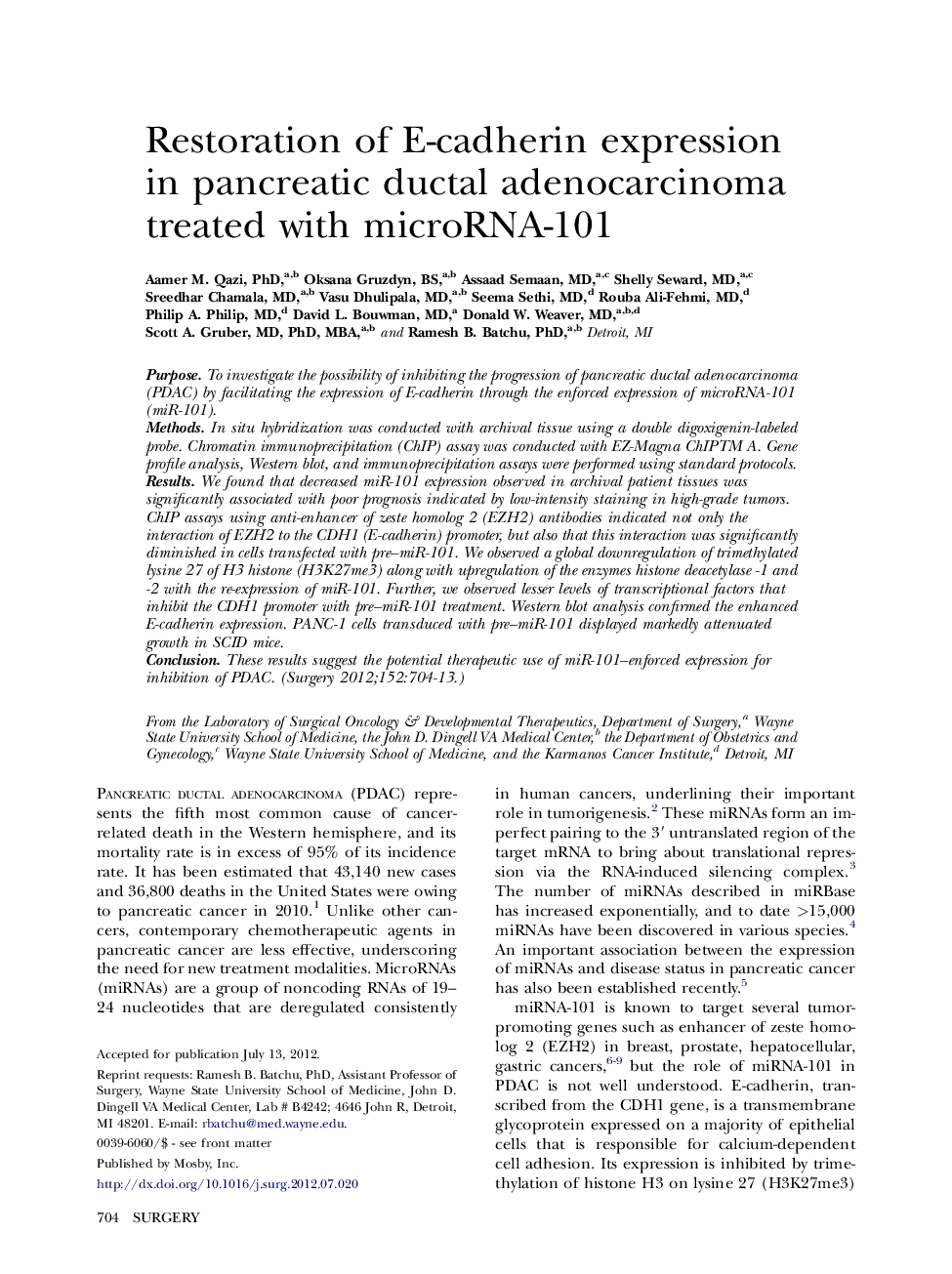| Article ID | Journal | Published Year | Pages | File Type |
|---|---|---|---|---|
| 4307838 | Surgery | 2012 | 10 Pages |
PurposeTo investigate the possibility of inhibiting the progression of pancreatic ductal adenocarcinoma (PDAC) by facilitating the expression of E-cadherin through the enforced expression of microRNA-101 (miR-101).MethodsIn situ hybridization was conducted with archival tissue using a double digoxigenin-labeled probe. Chromatin immunoprecipitation (ChIP) assay was conducted with EZ-Magna ChIPTM A. Gene profile analysis, Western blot, and immunoprecipitation assays were performed using standard protocols.ResultsWe found that decreased miR-101 expression observed in archival patient tissues was significantly associated with poor prognosis indicated by low-intensity staining in high-grade tumors. ChIP assays using anti-enhancer of zeste homolog 2 (EZH2) antibodies indicated not only the interaction of EZH2 to the CDH1 (E-cadherin) promoter, but also that this interaction was significantly diminished in cells transfected with pre–miR-101. We observed a global downregulation of trimethylated lysine 27 of H3 histone (H3K27me3) along with upregulation of the enzymes histone deacetylase -1 and -2 with the re-expression of miR-101. Further, we observed lesser levels of transcriptional factors that inhibit the CDH1 promoter with pre–miR-101 treatment. Western blot analysis confirmed the enhanced E-cadherin expression. PANC-1 cells transduced with pre–miR-101 displayed markedly attenuated growth in SCID mice.ConclusionThese results suggest the potential therapeutic use of miR-101–enforced expression for inhibition of PDAC.
